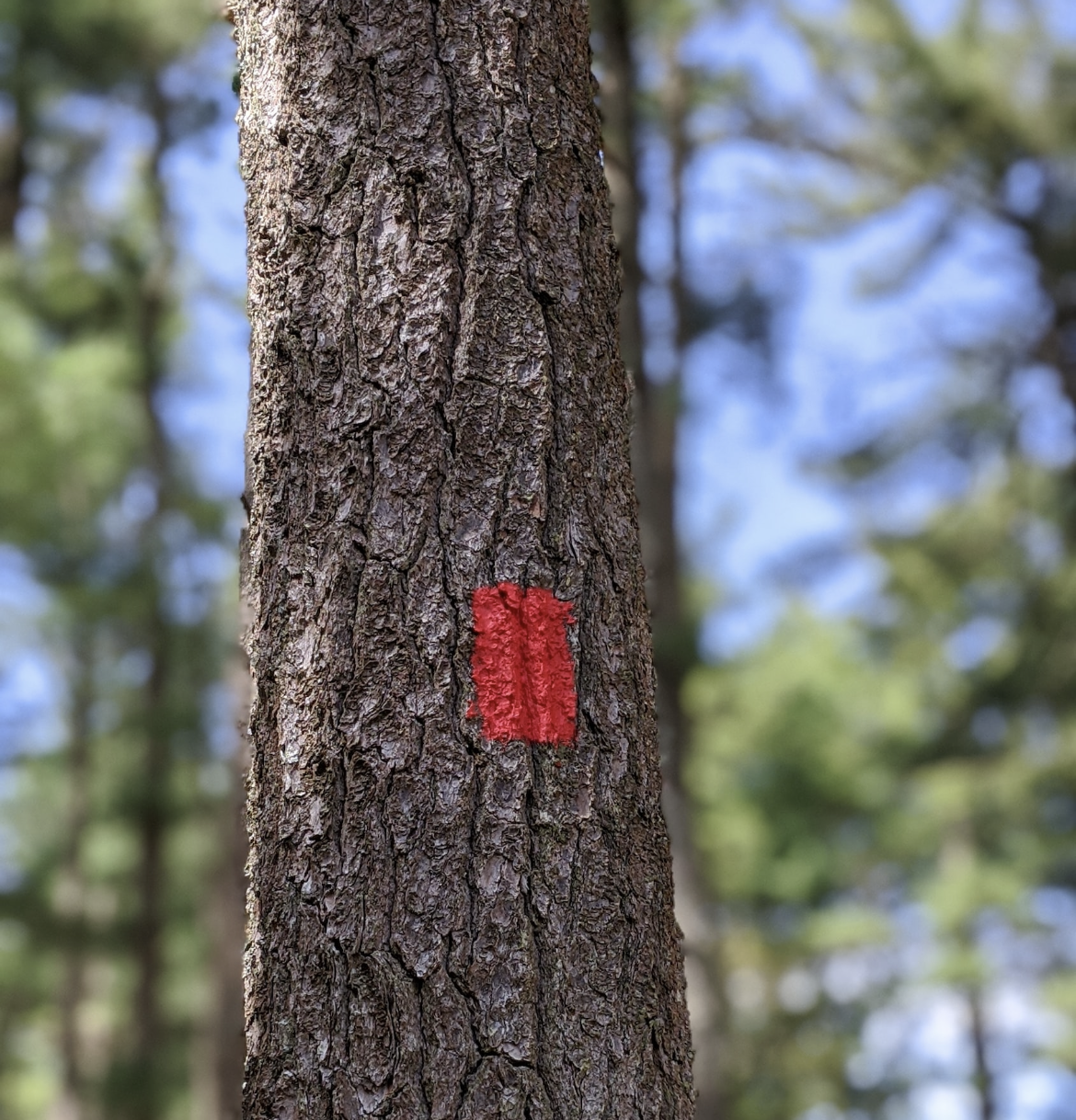Getting Outdoors: Reading Trail Blazes (Markings)

Trailblazing is an essential aspect of hiking and navigating through trails, especially in areas with dense forests, mountains, or desert terrains. Trail blazes are markers along a hiking trail. They indicate the direction, distance, and location of the trail. These markers come in various shapes and colors, but they all serve the same purpose: to guide hikers safely along the trail.
In general, there are three types of trail blazes: start blazes, end blazes, and directional blazes. Each of these blazes serves a unique purpose. Blazes provide hikers with essential information about the trail.
When embarking on a hiking or outdoor adventure, you may come across blaze trail markings along the way. These markers play a crucial role in guiding you safely and efficiently through the wilderness. Understanding and interpreting blaze trail markings is an essential skill for any outdoor enthusiast.
What are Blaze Trail Markings?
Blaze trail markings are distinctive signs or symbols placed along a trail to indicate the designated route. Blaze markings are on trees, rocks, or posts and come in various shapes, colors, and sizes. These markings ensure that hikers stay on the right path, especially in areas with multiple intersecting trails or in challenging terrain.
Types of Blaze Trail Markings:
Painted Blazes:
Again, trail marking is typically on trees or rocks. Different colors indicate various trails or routes. Check the trailhead sign where you entered the park for information about color significance.
Metal or Plastic Blazes:
In some areas, you may encounter metal or plastic markers affixed to trees or posts. These durable blazes often have standardized shapes and colors, making them easier to identify.
Start Blazes:
Start blazes are usually found at the beginning of a trail or at the start of a new section of a trail. They are designed to help hikers locate the trailhead. Trail blazes provide critical information about the trail’s starting point, such as trail name, distance, and difficulty level.
Additionally, start blazes begin with an arrow or a rectangle. They may have additional information, such as the trail’s rules, regulations, and recommended hiking gear. The color of start blazes may vary depending on the region or trail management. The colors are often bright and noticeable to ensure that hikers can easily locate them.
End Blazes:
End blazes are found at the end of a trail or at the end of a section of the trail. These trail blazes sometimes provide information about the surrounding area, such as any nearby attractions or the trail’s connection to other trails.
Additionally, end blazes are typically marked with an “X” or a circle. Some may have additional information, such as the trail’s length, difficulty, and elevation gain. The color of end blazes may also vary depending on the region or trail management. Blazes are usually placed in a visible location to help hikers locate them.
Which way to turn:
When following trail blazes, it is essential to understand how to read them correctly. In general, hikers should follow the blazes in the direction that they are facing.
In conclusion, trail blazes are essential for hikers to navigate through the trail safely and efficiently. Start blazes provide critical information about the trail’s starting point, and end blazes indicate the end of the trail. Directional blazes help hikers navigate through the trail’s twists and turns. Understanding how to read trail blazes correctly is also essential to follow the trail’s direction and avoid getting lost.
Understanding blaze trail markings is a fundamental skill for any hiker or outdoor enthusiast. By recognizing the colors, shapes, and placement of these markers, you can navigate trails safely and confidently. Happy hiking!
This blog was created by Jennifer Smeddy, M.Ed., RYT 500 who has been practicing yoga for over twenty-five years and an avid hiker. She has taught yoga certification classes to hundreds of Yoga Teacher Training students with Leading Yoga. believes that her passion lies in helping others develop strong personal practices and creating space to be happy and healthy. Jennifer enjoys hiking, biking, reading, and spending time with her family. She is currently the director and a lead instructor at LeadingYoga.com teaching online yoga classes and yoga teacher training certification coursework.
If you like this blog share it with your friends! Share your thoughts or comments and get in touch with us – we’d love to hear from you! Also, if you would like to write a blog for us get in contact with us too!
